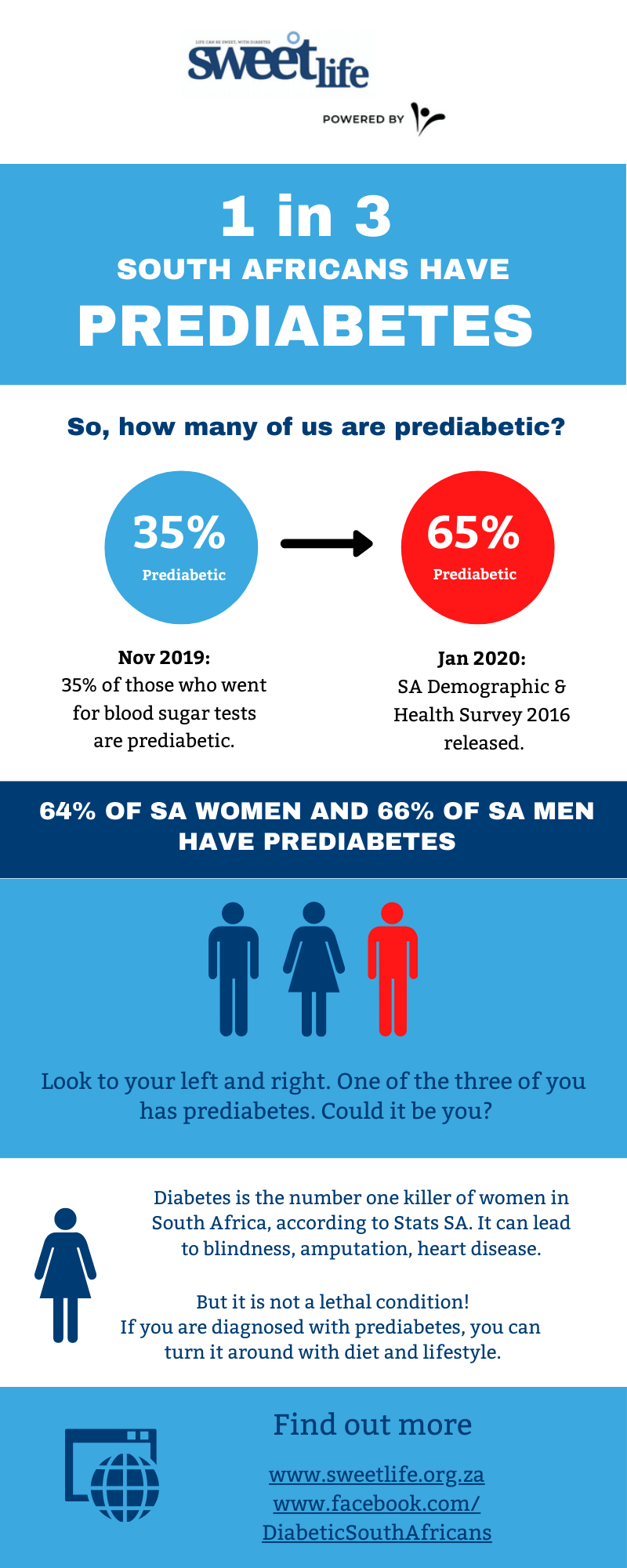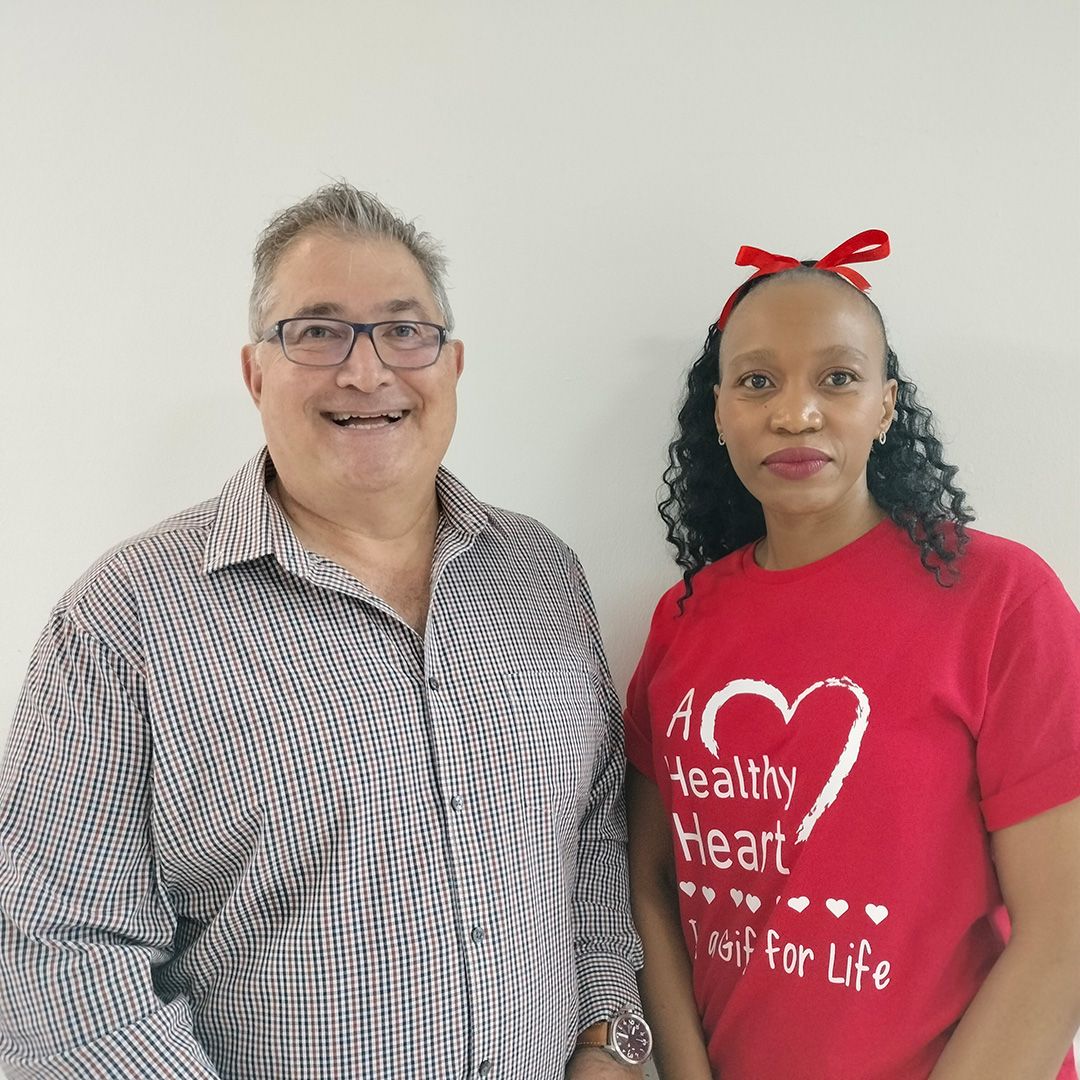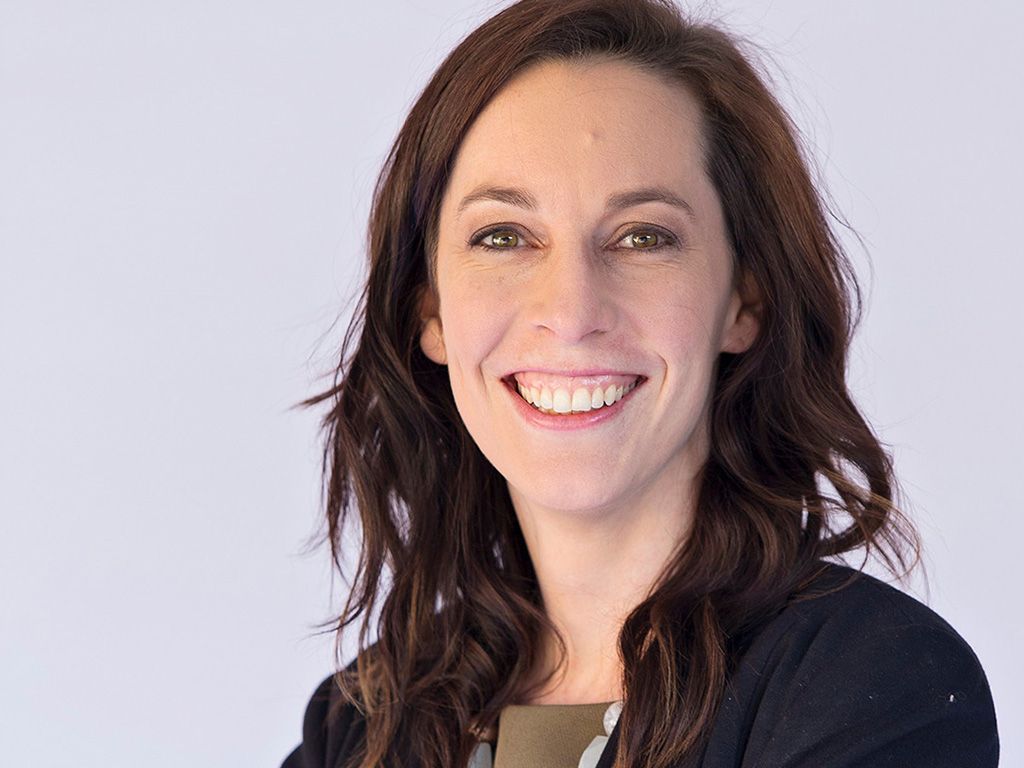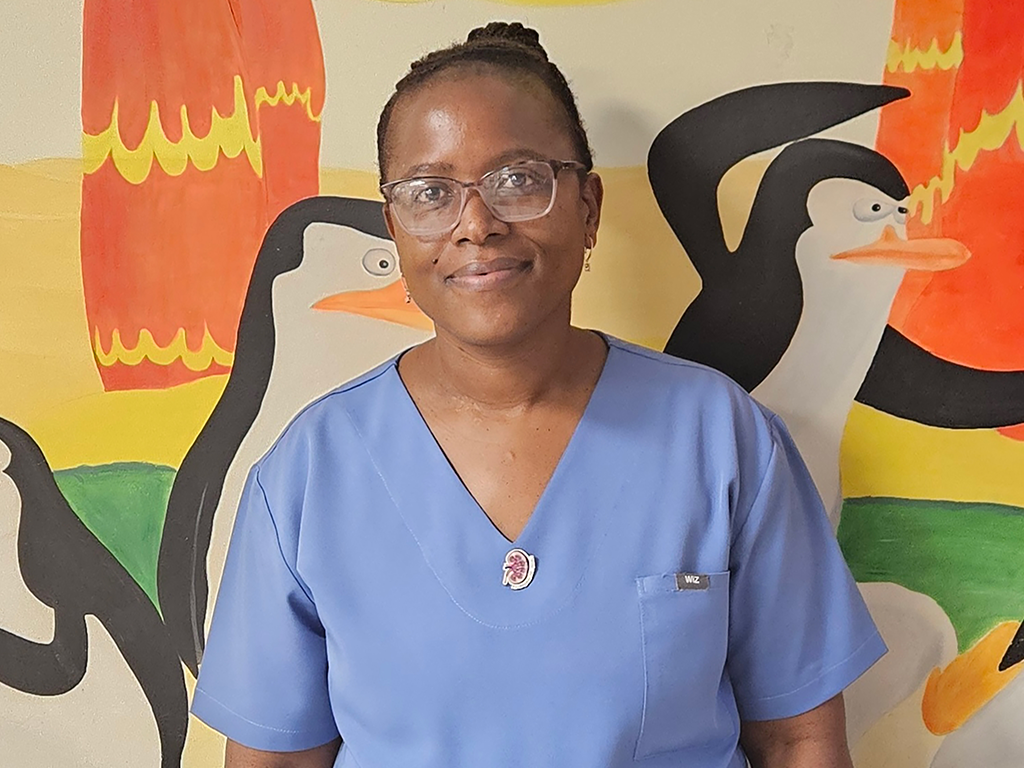The next epidemic is here already: here’s how to prepare
Drickus Maartens • June 2, 2020
One third of South Africans who tested their blood sugar have prediabetes. What does this mean? There’s still time to turn the diabetes epidemic around.
If there’s one thing the coronavirus pandemic is teaching us, it’s that we’re capable of making dramatic changes when we need to. As a nation, South Africans can unite to protect our health. But while COVID-19 presented as an immediate, loud threat, the next health epidemic is silent - and pervasive. Our next challenge is here, and it’s diabetes.
The diabetes epidemic in SA
Look at the person to your left and right on your next Zoom call. One of the three of you has prediabetes. You won’t see it as immediately as coronavirus, and there’s not nearly as much media hype around it, but the risks are very real - and very preventable. Diabetes is the number one killer of women in South Africa, according to Stats SA. It can lead to blindness, amputation, heart disease. But it’s not a lethal condition - not if you’re aware of it, and make a few simple changes.
⅓ of us are at risk for diabetes
Where do we get these numbers from? The people who took advantage of free blood glucose tests in National Diabetes Month (November 2019): 35% of them had abnormally high blood sugar, putting them in the prediabetic range - with an additional 5% testing as diabetic.
The recently released South Africa Demographic and Health Survey 2016
shows that these numbers are actually too low. They report that very high proportions of women (64%) and men (66%) are prediabetic (adjusted HbA1c level of 5.7%-6.4%). “Thus, a large proportion of adults are either not aware of their condition or not aware that they are at risk for diabetes.”
Diabetes and COVID-19
What makes this urgent is, of course, the fact that diabetes is a risk factor for COVID-19, and that the death rate is higher among those who have diabetes, obesity and hypertension. So the fact that at least a third of our population has prediabetes with no knowledge of it means that we are at greater risk of more serious COVID-19 cases.
What is prediabetes?
The World Health Organisation (WHO) considers blood glucose levels of below 5.5mmol/l to be normal: those of 7mmol/l and above are considered diabetic. Between these two cutoff points lies the prediabetic range: 5.5 to 7mmol/l. The good news? If you have prediabetes, you can make diet and lifestyle changes and bring blood sugar levels back to the normal range. This dramatically reduces the risk of developing Type 2 diabetes. But only if you know you have it!
According to WHO, 80% of cases of diabetes, 80% of heart disease and 40% of cancer could be prevented by avoiding tobacco, increasing physical activity and adopting a healthy diet. It is globally recognized that, in the case of NCDs (Non Communicable Diseases) and especially diabetes, prevention through lifestyle changes is critical and cost-effective
What this is, really, is a gift: advance warning that your body needs some help to prevent a chronic condition. We’ll provide further advice on how to turn prediabetes around next week.
Find out more about living well with diabetes by visiting Sweet Life on www.sweetlife.org.za
or Diabetic South Africans on Facebook.
More about the data:
During National Diabetes Month, a number of pharmacies like Clicks, Dis-Chem and AlphaPharm offer free blood glucose testing. We managed to get hold of the data through Allegra, who have created an entire health information exchange that completes the circle of care for all stakeholders like medical aids, insurance companies, pharmacies, pharmacy clinics - and patients. They’re all connected.
Allegra
empowered Sweet Life Diabetes Community, through their health information exchange, to get a picture of the extent of diabetes in SA and how we can act preventatively to minimize complications and unnecessary medical costs. The data was analysed by Percept, and we saw that of the 16,477 data sets (that had all the required data), 60% had normal blood sugar, 5% had measurements at the diabetic level and a staggering 35% had prediabetic readings.
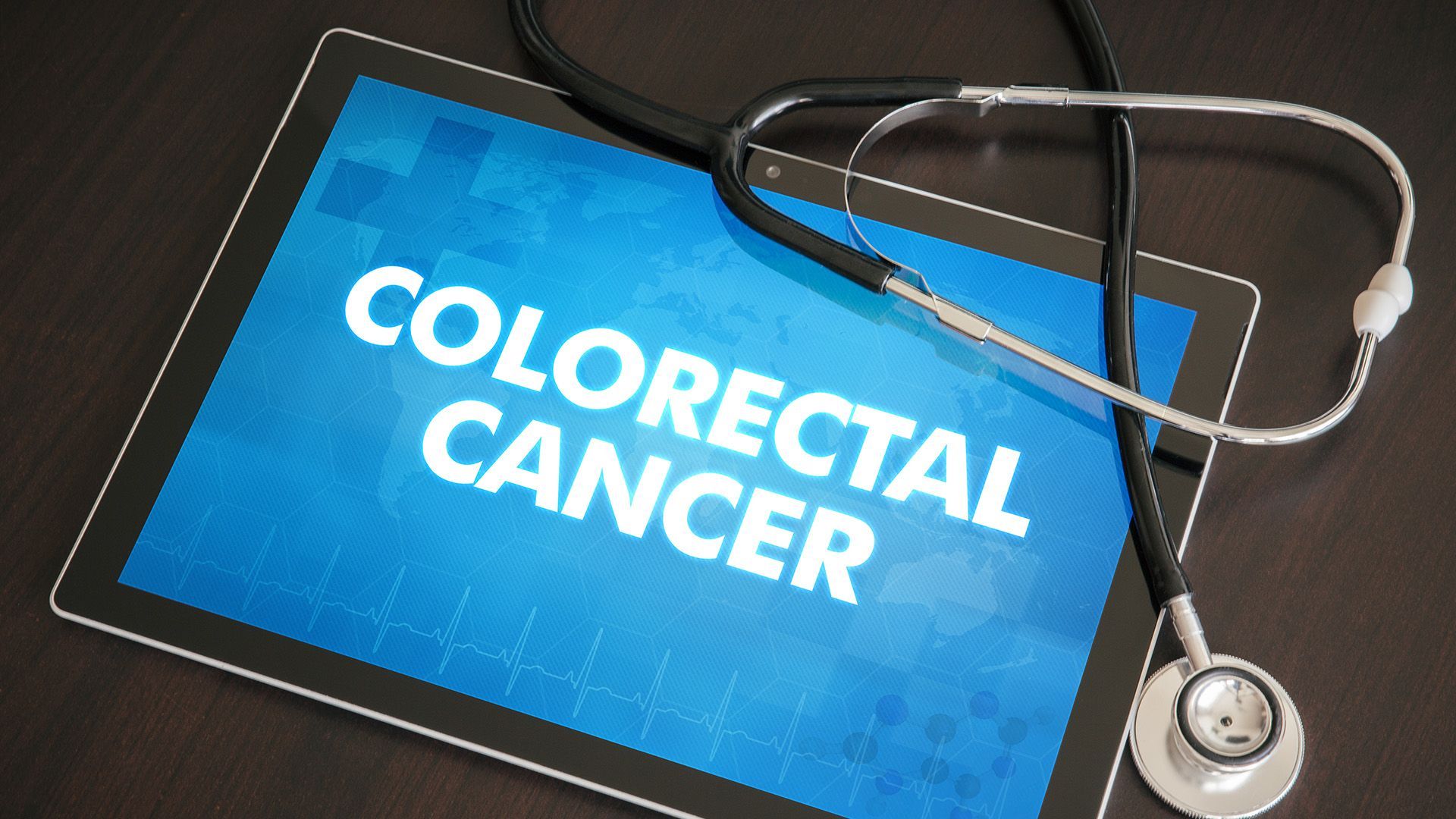
April 11, 2025
Colorectal cancer, one of the most prevalent yet preventable cancers, can develop in the colon or rectum, often starting as small polyps that can quietly become malignant if left unchecked. Dr Mpho Ramabulana, a colorectal surgeon and gastroenterologist at Netcare Akasia Hospital, underscores the life-saving power of vigilance and the importance of early detection.
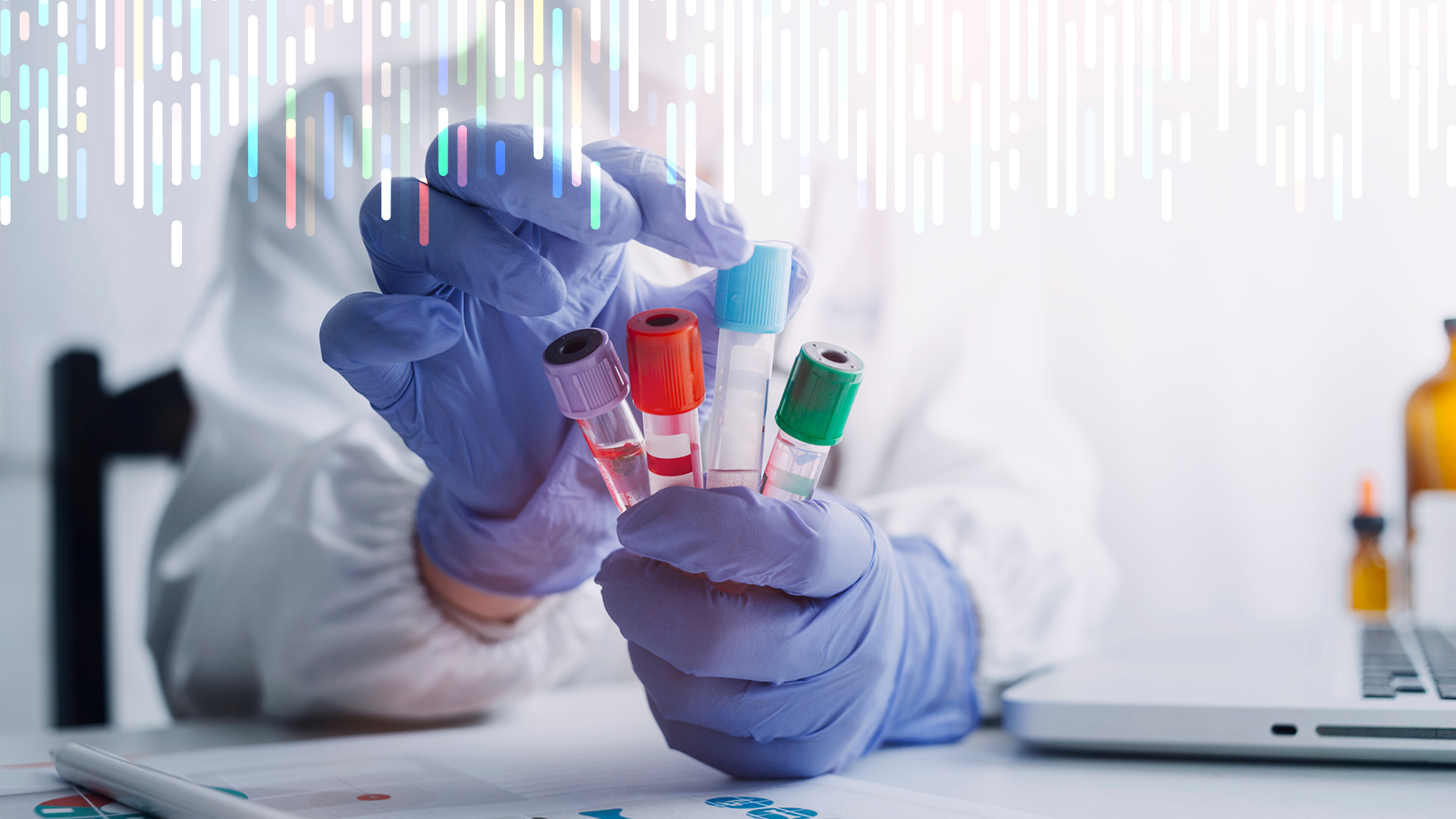
February 28, 2025
The lives of millions of South Africans with a litany of rare diseases can be vastly improved, and even saved, by addressing challenges in identifying, studying and treating their conditions. With Rare Disease Day on the 28th of February 2025, the Rare Diseases Access Initiative (RDAI) is driving an evolution of the country’s healthcare, through innovative strategies to better care for over 4.2million people living with an estimated 7000 rare diseases. “As our healthcare system faces significant changes in the years ahead, it is vital that we also advocate for people living with rare diseases in South Africa, especially those with limited healthcare access,” said Kelly du Plessis, CEO of Rare Diseases South Africa (RDSA), a member of RDAI. “As part of our ongoing research and awareness efforts, RDAI has conducted an initial analysis of the incidence and prevalence of rare diseases within the country.” This research will assist in improving access to healthcare, policy development, and patient advocacy, while giving critical insight into the challenges faced by patients. “According to research, some rare diseases affect fewer than 1 in a million people, while others, such as Down syndrome, cystic fibrosis, and haemophilia, have a more recognisable prevalence,” says Dr. Helen Malherbe, RDAI lead researcher on rare disease prevalence data. “Many conditions are undetected, underdiagnosed or misdiagnosed, with too many having no information available about them at all.” The RDAI was formed in 2019 to promote a more favourable environment for those impacted by rare diseases in South Africa. Participants include Ampath, the Board of Healthcare Funders (BHF), Discovery Health, Genetic Counsellors South Africa (SASHG), the Government Employees Medical Scheme (GEMS), Health Funders Association (HFA), Medihelp, Medscheme, North-West University (NWU), Rare Diseases South Africa (RDSA), the South African Medical Association (SAMA) and The South African Medical Technology Industry Association (SAMED). The Council for Medical Schemes (CMS) participates as an observer. In the same year, Rare Disease International signed a memorandum of understanding with the World Health Organisation leading to an international rare disease policy framework. In 2021, the United Nations General Assembly moved to adopt a resolution recognising 300 million people living with rare diseases worldwide. “A general lack of awareness and delayed diagnosis remain major hurdles for those affected by rare diseases. Policymakers and healthcare stakeholders need to prioritise access to treatment, diagnosis, and support for rare disease patients,” says Bada Pharasi, CEO of IPASA, “Through this initiative, working collaboratively with stakeholders at every level of the healthcare supply chain, we can bring real and meaningful change to those affected, including family members and care givers, through smart and efficient strategies.” The globally agreed definition of a rare disease is any medical condition with a specific pattern of clinical signs, symptoms, and findings that affects fewer than or equal to 1 in 2000 persons in a population. “Most are genetic, and some are inherited and passed down in families,” Malherbe says. “Some affect only the patient’s genetic recipe, while others may be acquired during life due to infection, trauma, or environmental effects. For many, the cause is still unknown. “These conditions mainly affect children, as they are largely incurable and many are life-threatening. Some require specialised and co-ordinated care, some have limited and expensive treatment options, while others have no information or effective treatments at all,” she adds. The RDAI is calling for a patient-centred care model built on equitable access, transparency and efficiency. Naturally, this model calls for the open participation of patients, the healthcare industry, health professionals, and the Government. “The most critical elements are robust diagnosis standards, improved access to treatment, data collection and management, co-ordination of care, measurement of outcomes and ongoing collaborative research,” du Plessis says. “We need to establish rare disease advisory committees, map gaps and opportunities, establish system requirements, create a roadmap and plan a phased implementation with clear timelines.” The RDAI states that these policy development steps would be a start in quantifying the disease burden and defining standards of care. This would be followed by building and strengthening the capacity to facilitate appropriate diagnosis, treatment, continuity and data monitoring. Thoneshan Naidoo, Chief Executive Officer of the Health Funders Association noted that, “We appreciate the unique opportunity provided by RDAI which enables stakeholders across the industry to work together and identify strategies that improve equitable access to the appropriate diagnosis, treatment and healthcare services for rare disease patients, in an affordable and sustainable manner, taking account of the other pressing needs across the healthcare system.” “True innovation in healthcare is only possible through partnerships and joint advocacy efforts that raise awareness and improve access to treatment. Our long-term goal is the development of a rare diseases policy framework and guidelines for coordinated care,” says Pharasi. “Our members are united in the commitment to unlocking improved patient outcomes and improving access to services and robust health needs assessment facilities.” he concludes. About RDAI The Rare Diseases Access Initiative (RDAI) is dedicated to advocating for improved healthcare access, policy development, and patient support for those affected by rare diseases in South Africa. The initiative brings together key healthcare stakeholders, including pharmaceutical associations, funders, genetic specialists, and patient advocacy groups, to drive impactful change. About RDSA Founded in 2013, Rare Diseases South Africa (RDSA) is a non-profit organisation advocating to ensure that people living with rare diseases and congenital disorders experience greater recognition, support, improved health service and better overall quality of life. Started out of personal need following the diagnosis of organisation founder, Kelly du Plessis' son, it became evident that there was a lack of awareness and support for rare diseases in general in South Africa. About IPASA The Innovative Pharmaceutical Association South Africa (IPASA) is a voluntary trade association representing 24 leading pharmaceutical companies committed to research, development, and innovation. Our mission is to drive healthcare advancement by advocating for policies that improve patient access to safe, high-quality, and affordable medicines.


